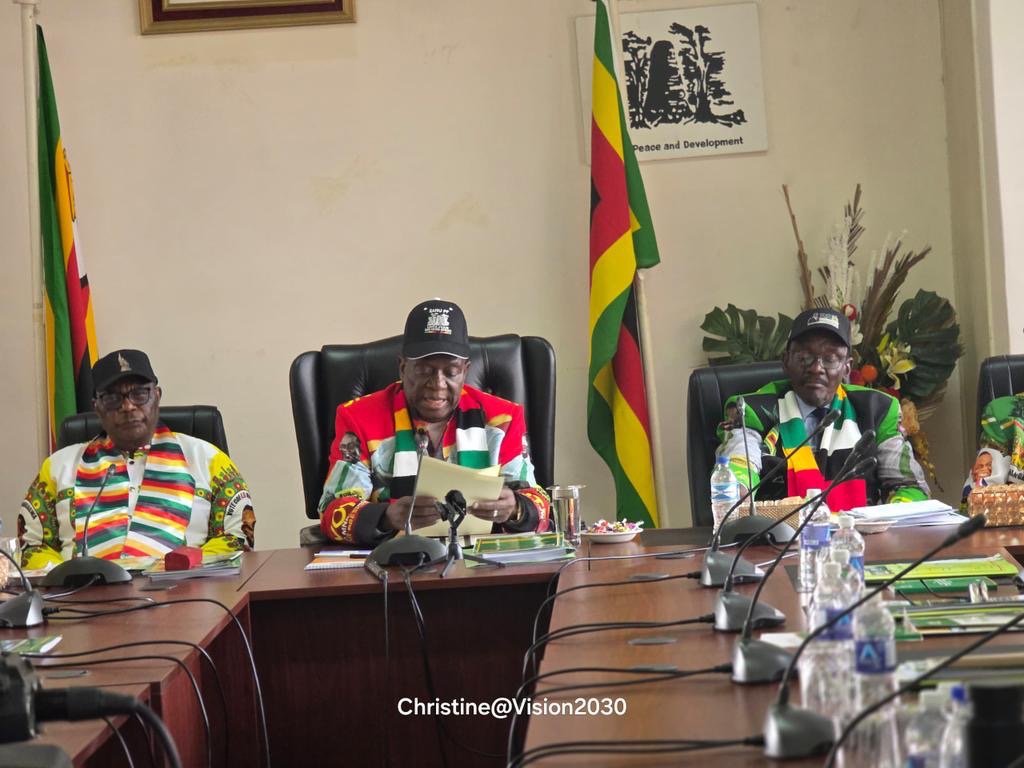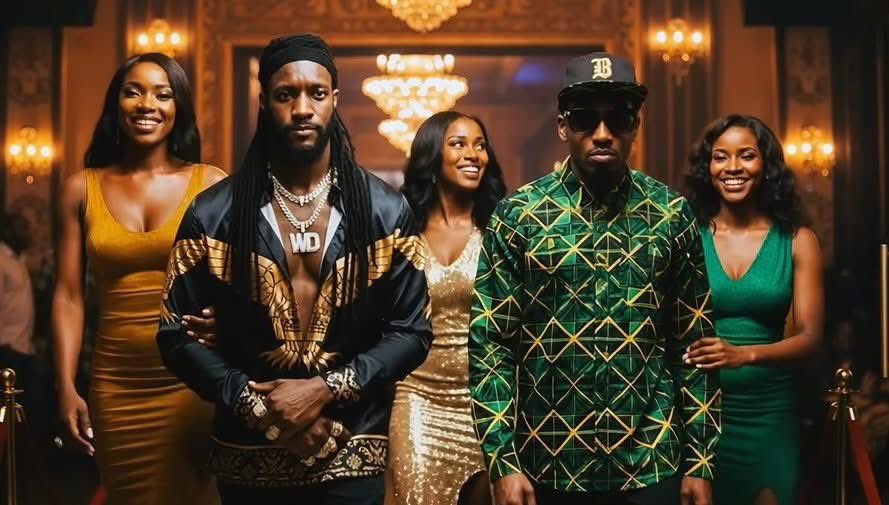By Marshall Bwanya
Harare — At 29, Luke (not real name) still remembers the day he decided to stop hiding from himself.
“I was born with ambiguous genitalia, and at birth, the midwives advised my mother to label me female since I did not fit into the male gender,” he recalls quietly, his hands resting nervously on his lap.
“I was given the name Sharleen, and at the age of 16, I began developing more male-dominant features.
“That’s when I decided to transition to male,” adds Luke.
That decision changed everything.
His family could not accept that the daughter they had raised for sixteen years now identified as male.
“My relatives did not take it well,” Luke says.
“So I decided to relocate to South Africa, where the environment was calmer and more accepting.”
Eight years later, he returned home, only to find that the family ties he once knew were gone.
“I never reconnected with any of my relatives since they all knew me as a female,” he says. “That broke me.”
Luke’s life story reflects a deeper social and institutional invisibility faced by intersex people in Zimbabwe — individuals whose physical or biological sex characteristics don’t fit neatly into the categories of male or female.
During the COVID-19 pandemic, Luke connected with local intersex and LGBTQ organisations.
“Through therapy sessions, I finally learned to accept myself,” he says. “That’s when I became an advocate for intersex issues.”
His journey, however, remains painful.
“I once walked away from a health facility after disclosing to a nurse that I am intersex.
“She called other male nurses to come and look at me — that really upset me, and I left without receiving medical attention,” Luke recounts.
He pauses, his voice trembling. “I have attempted suicide twice because of the negativity I faced from my family.
“Fortunately, I received counselling from GALZ and ICoZ, who helped me heal and regain confidence.”
Today, Luke campaigns for legal and social recognition.
“I would like the government to look into intersex issues seriously and listen to our lived realities,” he says.
“Society should not be quick to judge.
Instead, it should take time to understand a person’s life and experiences,” added Luke.
Understanding Intersex
According to the World Health Organization (WHO), “intersex people are born with physical, hormonal, or genetic characteristics that do not conform to the typical binary biological definitions of male or female.”
This means that intersex traits may appear in various ways — sometimes visible at birth, sometimes only later in life.
Jon (not real name) an LGBTQ rights advocate who has worked in human rights circles for over a decade, says public misunderstanding often makes intersex people more vulnerable.
“Many people equate being intersex solely with having ambiguous genitalia,” Jon explains.
“However, there are about 47 variations of intersex conditions. Some people are intersex not necessarily because they have both male and female sexual organs, but due to hormonal differences.”
Jon stresses that intersex variations can be anatomical, chromosomal, or hormonal.
“People tend to limit the definition to visible anatomy.
“But these variations can also manifest through hormonal imbalances or secondary sexual characteristics that blur traditional gender distinctions,” said Jon.
Jon adds thoughtfully, “Personally, I qualify as intersex because of my hormonal makeup — I believe my hormones are more aligned with my mother’s side.”
“But in most spaces, I’ve been classified as transgender or non-binary.
“That shows how much confusion still exists between gender identity and biological sex,” said Jon.
Jon’s comments capture a vital truth — the intersex spectrum is diverse, and the lived experiences of intersex people cannot be boxed into a single narrative.
A New Dawn for Recognition
In July 2025, the Zimbabwean government launched a legal reform process aimed at recognising and protecting the rights of intersex people.
The initiative, supported by President Emmerson Mnangagwa, was described as a crucial step toward identifying legal and policy gaps that had long left intersex citizens unprotected.
Vimbai Nyemba, the Permanent Secretary in the Ministry of Justice, Legal and Parliamentary Affairs, confirmed that the government had accepted recommendations from the U.N. Human Rights Council’s Universal Periodic Review (UPR) to shield intersex people from non-consensual medical procedures and human rights violations.
“This is an important moment for inclusivity.
“We recognise the need for legal frameworks that protect intersex citizens from discrimination and ensure their dignity and bodily autonomy,” ,” Nyemba said.
The reform process, which falls under the National Development Strategy 1 (NDS1), was also hailed by the United Nations Development Programme (UNDP) as a progressive and necessary intervention.
Lealem Berhanu Dinku, UNDP’s deputy resident representative in Zimbabwe, emphasised the urgency of the reform.
“Intersex people are born with sex characteristics that do not fit typical definitions of male or female.
It is estimated that 1.7 percent of the global population is intersex.
“They often face discrimination, medical violations, and exclusion. This initiative is a major step forward in protecting their rights,” said Dinku.
The Fight for Legal Recognition
On 19 September 2025, the intersex community filed a landmark constitutional challenge in the High Court — a first-of-its-kind case demanding that the government formally recognise intersex persons as a distinct category under the law.
The applicants include seven intersex individuals, among them minors and adults, as well as two advocacy organisations — the Health Law and Policy Consortium (HLPC) and the Intersex Community of Zimbabwe (ICoZ).
The case seeks to compel the state to introduce a third sex marker (“I”) on birth certificates, IDs, and passports — and to outlaw non-consensual medical surgeries on intersex infants.
Tinashe Mundawarara, HLPC board chair, stated that the lack of legal safeguards violates several constitutional provisions, including the right to bodily integrity under Section 52 and the best interests of the child principle under Section 81.
“By failing to ensure that intersex children are issued birth certificates that reflect their unique biological reality, the state denies them a fundamental right.
“This omission creates barriers to accessing healthcare, education, and other essential services,” he said.
ICoZ director Kudakwashe Murisa called the court action “historic.”
“For the first time, the Zimbabwean legal system is being challenged to recognise the rights of intersex individuals as equal human beings under the Constitution.
“This case is not just about one individual — it’s about an entire community that has been invisible for too long,” said Murisa.
Beyond the Courtroom
The reform process has been widely welcomed by activists across the LGBTQ spectrum.
Alessandrabree Chacha, a transgender woman and LGBTQ rights advocate, described it as “a step forward in acknowledging and protecting the most marginalised.”
“Trans and intersex lives are born this way. There is scientific and biological evidence supporting this.
“This step to recognise our existence is much appreciated.
“It shows that our advocacy to be seen, respected and valued like any human being is paying off,” she said.
Queen Bee Chihera-Meki, Programs Director at Trans and Intersex Rising Zimbabwe, said the initiative “acknowledges the rights and dignity of intersex individuals, aligning with international human rights commitments.”
Still, Chihera-Meki cautioned that cultural resistance remains a challenge.
“The backlash from some parts of society is not surprising.
“But recognition of intersex rights could pave the way for broader inclusivity and social acceptance,” she said.
The Hidden Pain Behind Policy
Behind every reform is a personal story — and many remain untold.
Luke’s struggles, from family rejection to medical humiliation, represent the lived trauma that legal documents alone cannot erase.
“In South Africa, I was accepted for who I am,” he reflects.
“Here, people look at me as though I am an abomination.”
His story mirrors countless others — people forced to live under false identities, denied medical care, and stripped of dignity for not fitting a binary that biology itself defies.
Dr. Edna Chivanga, a paediatric endocrinologist, says it is time for hospitals to change how they handle intersex births.
“There is nothing life-threatening about being intersex.
“Yet many hospitals rush to ‘correct’ what they see as a defect.
“These surgeries often cause more harm than good and violate children’s rights to consent,” said Chivanga.
A Society at a Crossroads
Zimbabwe stands at a historic juncture.
The government’s reform process and the ongoing High Court challenge could mark a turning point — one that redefines the legal understanding of gender and identity.
But success will require more than laws; it demands empathy.
Luke’s voice breaks when he says, “I hope society will one day learn to accept us as we are.”
As Zimbabwe debates its legal identity in the courtroom, the real question remains: can a society long rooted in binaries learn to see the humanity that exists between them?



